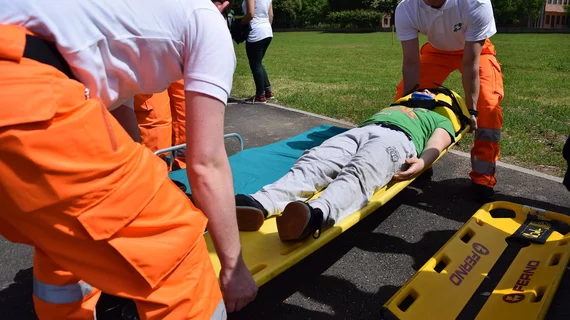What works—and what doesn’t—for chipping away at CT overutilization in the ED
The presence of any or all of four factors can help ensure appropriate CT utilization in emergency settings: established diagnostic pathways, alternative test availability, involvement of specialists and feedback from referrers.
By contrast, interventions that are unlikely to take a meaningful bite out of CT overutilization in the ED include family/patient education, clinical decision support tools and passive dissemination of appropriate use guidelines.
The findings are from a literature review conducted by emergency medicine researchers at the University of Calgary and published Aug. 1 in Annals of Emergency Medicine.
Lead author Cody Dunne, MD, senior author Shawn Dowling, MD, and colleagues analyzed around 150 studies with an eye on identifying ED-based strategies that effectively reduced CT imaging without compromising on diagnostic accuracy or patient safety.
After categorizing 26 documented actions into 15 single and 11 multimodal interventions, the researchers found those that engaged multiple specialties during planning and/or implementation had a greater reduction effect than ED-only interventions.
In particular, multidisciplinary-led interventions that provided an alternative to CT imaging “were the most effective at reducing usage and did so without compromising patient safety,” Dunne and co-authors report.
From the authors’ comments on the winning interventions:
Alternative test availability seems especially important in light of the common failure of CDS tools and appropriate-use guidelines to recommend a replacement for CT, Dunne and colleagues suggest. This lack “leaves providers without an alternative to complement their clinical gestalt (e.g., Low Risk Wells Score/Pulmonary Embolism Rule-out Criteria).” As a result, “for any cases considered borderline, one could resort to ordering the scan ‘just in case.’”
Provider feedback, including scenarios in which providers are given reports on their ordering rates, often with comparisons to departmental averages, tended to reduce the number of CT scans in the present review. “Most studies used quarterly reminders, and all informed physicians on where they were in terms of ordering frequency among their colleagues,” they report. “Findings from other studies on reducing low-value imaging are mixed; although, if combined with other initiatives, this appears to improve the effect.”
Diagnostic pathways tended to be notably nuanced strategies, the authors found, “often with a tiered or multilayered approach to investigation (e.g., including multiple imaging types and consultation).”
Specialist involvement is a diverse category, the authors observe. “Most studies increased the involvement of a specialist before ordering a CT (e.g., gynecology for all patients with gynecologic cancer) or increased access to them (e.g., introduced pediatric emergency medicine physicians in the ED),” they write.
At the same time, they spotlight two studies that decreased specialist involvement by de-mandating the presence of surgery consultants for minor traumas.
“Both types of interventions were demonstrated to be effective,” they write. “This conflicting finding may be explained by considering the effect that engaging specialties outside of emergency medicine have on the success of an intervention.”
More:
Multidisciplinary engagement in planning and implementation resulted in a considerably greater reduction in CT usage than when ED services led the intervention on their own. This highlights the importance of working with stakeholders from all affected groups when implementing change to maximize its success.”
The study is available in full for free.

